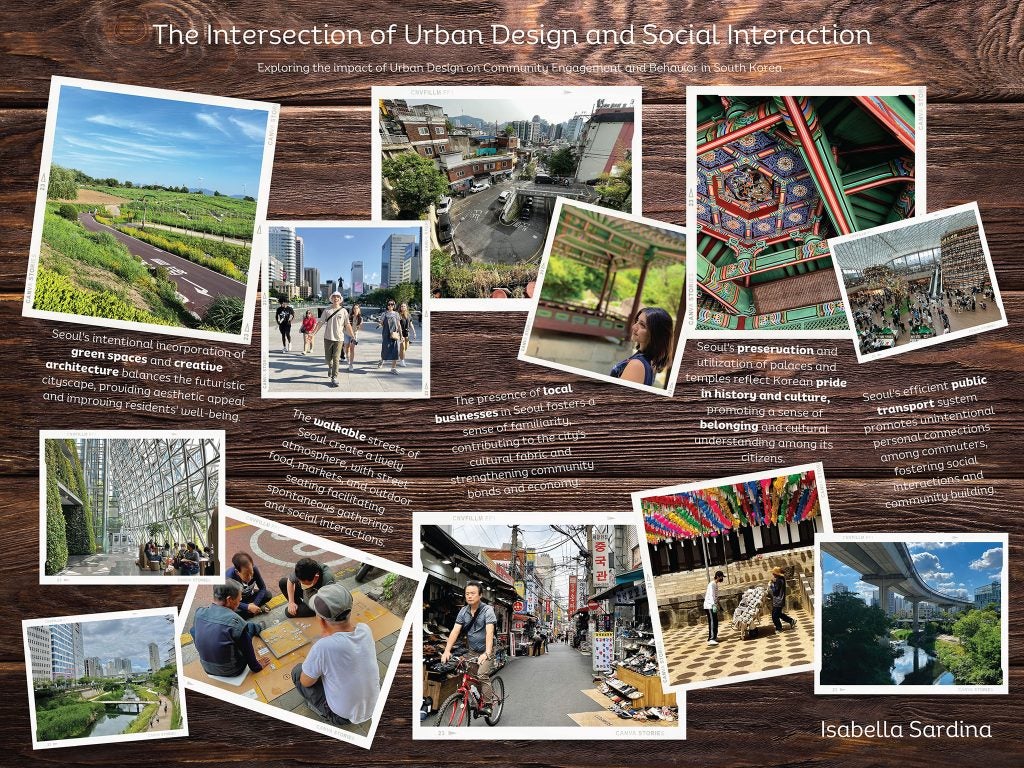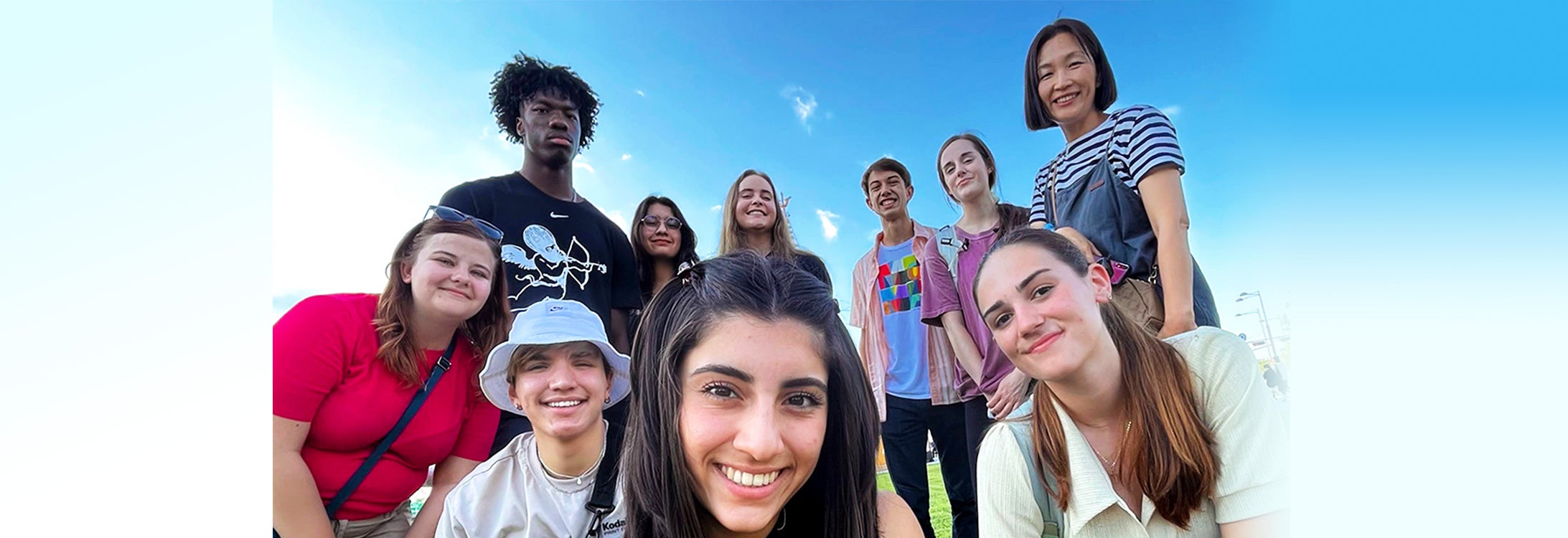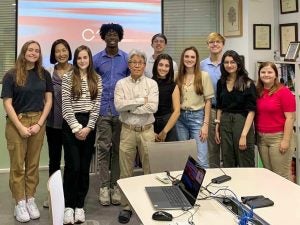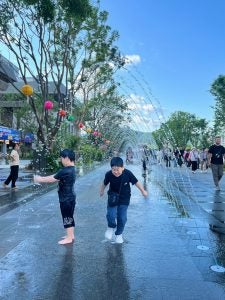Urban Design and Social Interaction in Seoul, South Korea
“Amidst the city of Seoul, South Korea, one day stood out as a pinnacle of inspiration during my time studying abroad through the Community & Regional Planning program. My topic of exploration was “The Intersection of Urban Design and Social Interaction,” and the day’s agenda promised to shed light on this intriguing connection.
Group photo at the C.A. Landscape Company with Dr. Yangkyo Chin, CEO
The morning began with a visit to the prestigious CA Landscape Design Co., an influential company renowned for its transformative urban design projects across South Korea. We were privileged to meet Yankyo Chin, the visionary president of the company, who shared his insights with our group. Among the various subjects discussed, one particular highlight captured our attention—the proposal of Busan as a candidate for the 2030 World Exposition.
The potential of hosting the World Exposition in Busan went beyond mere economic gains. It presented CA landscaping with the unique opportunity to design an exposition that global leadership appreciates. Yankyo Chin’s company envisioned an expo that enhanced tourism and fostered diversity and international collaboration. Through its symbolic and innovative design, the Expo has the potential to bring together people from various cultures and backgrounds, inspiring connections and unity.
After a profound conversation with Yankyo Chin, we ventured to experience two of CA Landscape Design Co.’s remarkable plazas firsthand. The first stop was Cheonggyecheon Park, situated around a stream flowing into the Hangang River. We delved into the stream’s historical and cultural significance, which had evolved over time due to thoughtful redesigns. This showcased the transformative power of urban design choices, reshaping how people interacted with their surroundings. CA Landscape Design Co. successfully revitalized the stream and its surroundings by creating inviting public spaces, ultimately fostering social cohesion and shared experiences.
Kids playing, Gwanghwamun Plaza
Next, we explored Gwanghwamun Plaza, another masterpiece done by the company. As we strolled through the colorful family-oriented space, it was evident that urban design profoundly impacted social interactions. The excitement exuded by the people enjoying the well-designed public space demonstrated how thoughtful urban planning could bring communities together and create a sense of belonging.
From the grand prospect of the 2030 World Exposition to the meticulous design of plazas and tourist destinations, each element of a city’s urban fabric played a pivotal role in fostering social cohesion and interaction. The convergence of architecture, landscape, and community dynamics offered a tapestry of opportunities to reimagine how people connected with their environment and one another.
The revelations we encountered left a lasting impression as the day drew to a close. The intersection of urban design and social interaction was a realm of boundless possibilities—a canvas upon which creators could paint an inspiring vision of unity, harmony, and shared experiences for a community. And I, for one, felt privileged to have witnessed this transformative power unfold in the vibrant heart of Seoul, South Korea.”
– Bella Sardina, Senior student in BS Community and Regional Planning program. Bella is a Global Fellow of the Global Fellows Program, Office of Global Affairs, ECU. She is a recipient of the 2022 Harold H. Bate Study Abroad Scholarship.



